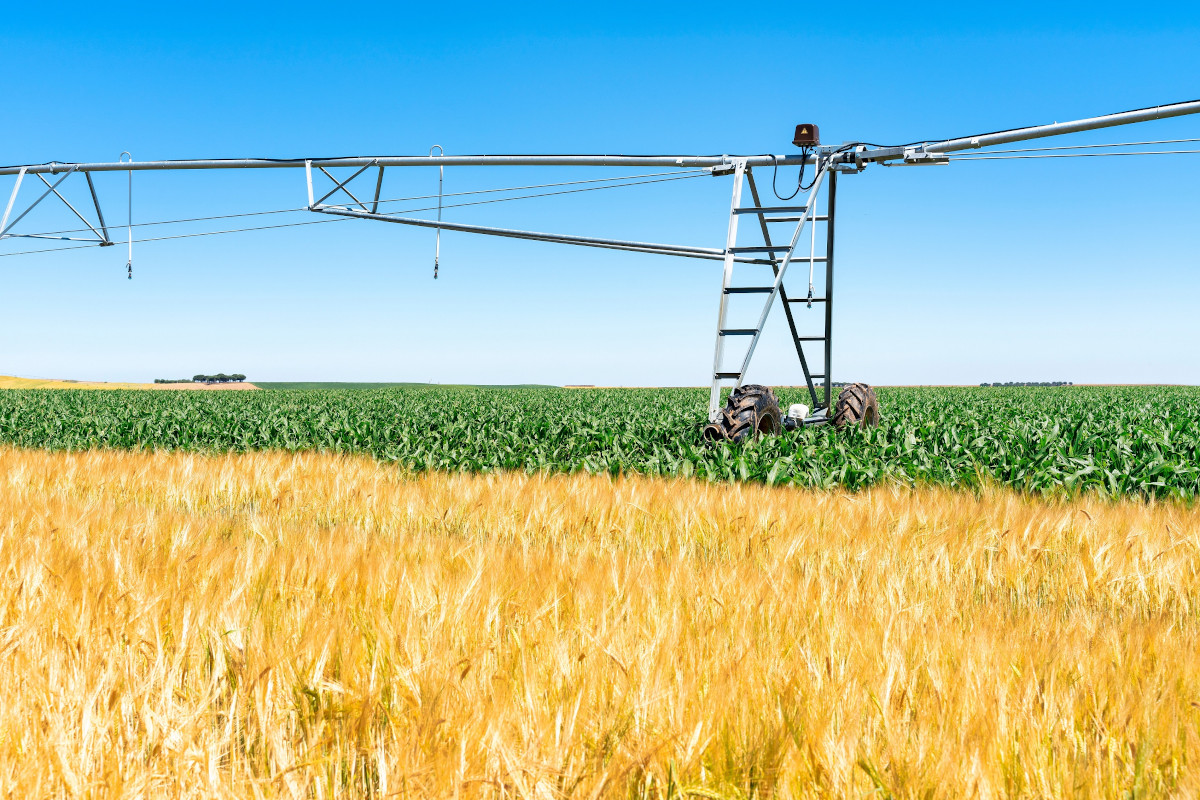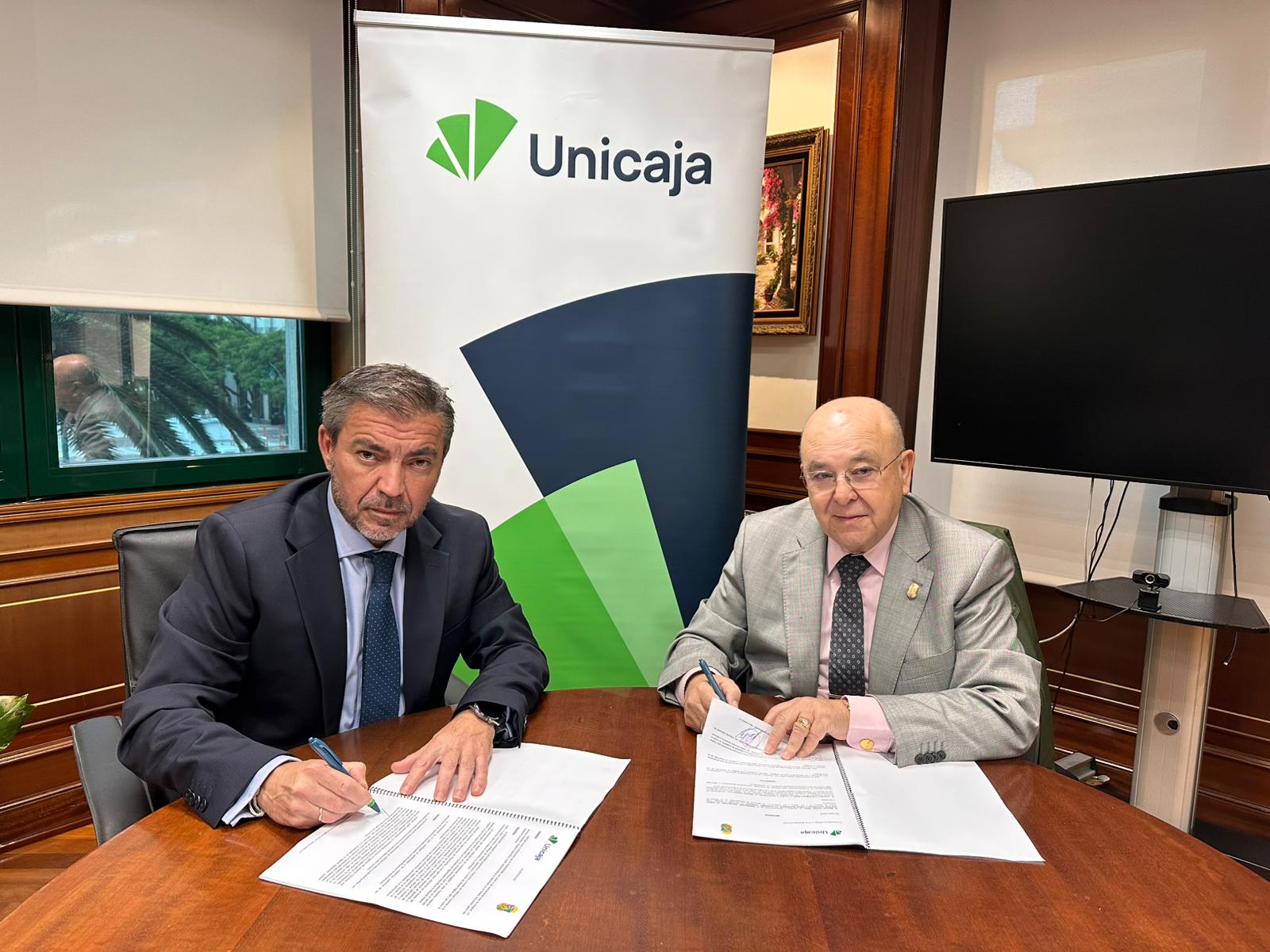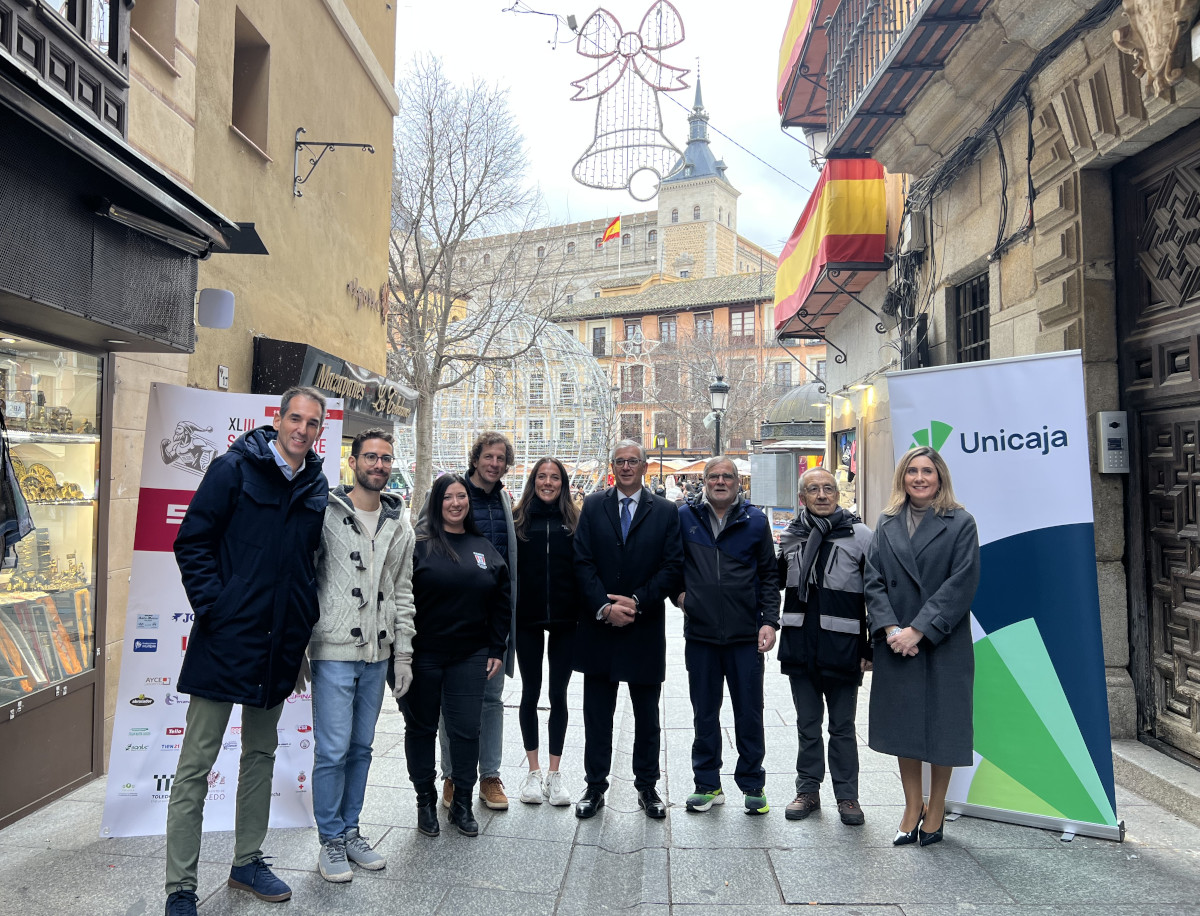Unicaja Banco has published its report ‘El Sector Agrario y la Industria Alimentaria en España: Principales rasgos y análisis regional en 2022’ (‘The Agricultural Sector and the Food Industry in Spain: Main features and regional analysis in 2022’), continuing the series of editions that began more than two decades ago on the sector, but extending, for the second consecutive year, the scope of the study to the whole country and its different autonomous communities. This document has been prepared by Analistas Económicos de Andalucía, a research company of Grupo Unicaja Banco.
The main objective of this report is to offer an analysis of the situation and recent evolution of the agricultural sector and the food industry in Spain, including a more detailed analysis by Autonomous Community, where information is available, using the latest available data.
The report is divided into four chapters. The first one focuses on analysing the relevance of the agricultural sector, showing, among other aspects, the development of the Common Agricultural Policy (CAP), the behaviour of the main labour market indicators and the evolution of agricultural production.
The second chapter presents the main agricultural macro-magnitudes in 2022, the latest year for which complete information is available, analysing the most important aspects of the evolution of agricultural income and production in Spain and its Autonomous Communities.
The third chapter focuses on the analysis of the agri-food industry, attempting to highlight the importance of this industrial branch through its main magnitudes (turnover, employment and business structure), without forgetting agri-food exports and food consumption.
Finally, the report includes a chapter on the main findings and conclusions regarding agricultural income and production in 2022, as well as the most important aspects related to the agri-food industry.
Main features of the agricultural sector
The Gross Value Added (GVA) of the agricultural sector in Spain (31,961 million euros) has decreased by 1.1% in 2022 compared to the previous year, affected by the negative weather conditions and the increase in production costs. This decrease has been especially intense in some of the communities with a greater weight of the agricultural sector in their productive structure or with a greater contribution to the national GVA, such as Andalusia, Castilla y León, Catalonia or Extremadura.
On average in 2022, employment in the agricultural sector fell by 3.5% to 774,800, around 4% of the employed population in Spain. Andalusia is the autonomous community with the highest number of people employed in the sector (around 31% of the national total) and has recorded a decline of more than 10%. There has also been a fall in employment in the sector in Extremadura (the region with the second largest share of agricultural employment). On the other hand, in other communities with more agricultural employment there have been increases (except in Galicia), with rates ranging from 0.2% in Castilla-La Mancha to 10.9% in Comunidad Valenciana.
Spain has 16.8 million hectares of cultivated land, 77.6% of which is rainfed. Of this area, 35.3% is devoted to cereals (almost 6 million hectares), with olive groves (around 2.8 million hectares) also standing out. The regions with the largest areas under cultivation are Castilla-La Mancha, Castilla y León and Andalusia, which together account for almost two thirds of the national total.
Spain is the world leader in olive grove surface area and production and the leading EU producer of fruit and vegetables. In terms of olive oil production (around 675,000 tonnes in 2022, less than half of the previous year), Andalusia accounts for just over three quarters of the national total, and also stands out in the production of vegetables and citrus fruits, together with the Comunidad Valenciana and Murcia. In the case of cereals, Castilla y León accounts for around 43% of the national production of wheat and a third of that of barley and maize. In general, both the productions of the main horticultural crops and cereals have decreased with respect to 2021.
The livestock with the highest populations are those of pigs and sheep (around 34.1 and 14.5 million in 2022, respectively), with the former decreasing by 1.1% and the latter by 4.2% compared to 2021. Castilla y León, Galicia and Extremadura together account for slightly more than half of the national cattle population, with the former standing out (22.5%). Likewise, Extremadura, Castilla-La Mancha and Castilla y León are the regions with the largest sheep population, while Andalusia stands out in the goat sector. Aragon and Catalonia are the regions with the largest population of pigs.
Agricultural income
According to provisional estimates by the Ministry of Agriculture, Fisheries and Food, agricultural income in Spain is estimated at 27,663.6 million euros in 2022, almost 14% of EU income (the third country in the EU after France and Italy).
Agricultural income has decreased by 6.2% in Spain compared to 2021 (15.9% in the EU). The growth in the value of agricultural production (plant, animal, service production and non-agricultural secondary activities not separable from agriculture) has not been able to offset the strong increase in intermediate consumption, derived solely from the growth in prices, over 35% in the case of energy and animal feed and close to 75% in fertilisers.
In terms of regional distribution, Andalusia accounts for around one third of income, while Castilla-La Mancha and Castilla y León account for around 10-11% in each case. This is followed by Aragon, Catalonia, Comunidad Valenciana, Extremadura, Murcia and Galicia, which account for between 5-8% of Spanish agricultural income.
Agricultural production
In 2022, the value of agricultural production (plant and animal) in Spain stood at 63,171.9 million euros, according to Ministry estimates, almost 11% more than the previous year (19.2% in the EU). This growth was due solely to the increase in prices (21.3%), as production fell by 8.8%, heavily influenced by weather conditions.
Spain is the third largest EU country in terms of the value of both plant and animal production, accounting for just over 12% of EU production. Specifically, it is the leading EU country in terms of the value of production of fruit, olive oil, pigs and sheep and goats. It is also second in terms of the value of vegetable production and third in terms of wine and meat and cattle.
The value of plant production in Spain reached 36,276.1 million euros in 2022, which represents 57.4% of the value of the production of the agricultural branch in Spain. This represents a growth of 3.6% compared to 2021 (15.3% in the EU), which has been exclusively due to the increase in prices (19.9%), as productions have decreased (-13.6%).
More than half of the value of vegetable production in Spain corresponds to fruit and vegetable products, with cereals (17.1%) and olive oil (9.9%) also being relevant. Spanish production represents more than a quarter of the value of fruit production in the EU, more than half of that of oil and around 17% of the value of vegetable production.
By crop group, the value of production increased in general in 2022, with the exception of fruit (-12.0%), due to the drop in production. In the rest, the growth rates ranged from 1.1% for cereals to 36.2% for olive oil, the latter increase being largely due to the rise in prices. For its part, the value of vegetable production (30.9% of vegetable production in Spain) has increased by 5.4%, due solely to the increase in prices, as has occurred in the case of cereals.
In terms of the different autonomous communities, Andalusia accounts for around a third of the value of Spanish vegetable production, while Comunidad Valenciana, Castilla y León y Castilla-La Mancha each account for between 9% and 12%. Murcia, Aragon and Catalonia account for around 6% and Extremadura and Galicia for around 4.5%. In four of them (Andalusia, Comunidad Valenciana, Castilla-La Mancha and Murcia), crop production accounts for more than 60% of the value of regional agricultural production, while in the rest it is animal production which represents a greater contribution to agricultural production, with the exception of Extremadura, where it makes a similar contribution.
Vegetables are the main crop group by production value in four of these nine communities with the highest vegetable production value (Murcia, Andalusia, Extremadura and Castilla-La Mancha), the second in another three (Comunidad Valenciana, Galicia and Catalonia) and the third in Castilla y León. In the latter, cereals are the main crop group, as in Aragon. For their part, fruit trees make the greatest contribution to the value of vegetable production in Comunidad Valenciana, Catalonia and Galicia.
The value of animal production in Spain reached 25,089.9 million euros in 2022, which represents around 40% of the value of agricultural production in Spain. The Spanish contribution to the EU production in the case of pigs and sheep and goats (more than 20%) stands out. In relation to 2021, a growth of 22.5% is estimated (26.7% in the EU), which is due to the increase in prices (24.3%), as production has fallen (-1.5%).
In Spain, meat and livestock account for 75.6% of the value of Spanish livestock production (54.7% in the EU), with pigs accounting for 40.3% of the value of production. The remaining 24.4% corresponds to the value of animal products (milk, eggs), with a higher contribution from milk. Both the production value of meat and livestock and that of animal products have increased in 2022, solely as a result of the increase in prices.
By region, almost half of the value of livestock production in Spain is concentrated in Catalonia, Aragon and Castilla y León. This is followed by Galicia and Andalusia, with contributions of between 10% and 12%, while Castilla-La Mancha, Extremadura and Murcia account for between 4.5% of the latter and 8.5% of the former. With the exception of Andalusia, Castilla-La Mancha and Murcia, in the rest animal production accounts for more than 45% of the value of agricultural production, exceeding 60% in Catalonia, Aragon and Galicia.
Among these regions, the value of meat and livestock production represents more than 65% of the value of regional animal production, with the exception of Galicia, where milk production has a special relevance. In Castilla y León, Andalusia and Castilla-La Mancha, milk also makes an important contribution to the value of animal production, although as in Catalonia, Aragon, Extremadura and Murcia, it is pigs that account for the highest value of production.
Main features of the agri-food industry
The food and beverage industry is one of the main industrial activities in the EU. In Spain, the fourth country in terms of turnover, the food industry is the main industrial branch, with more than 140,000 million euros, representing around a quarter of the turnover of the manufacturing industry (the highest percentage among the main EU countries). Agro-industry also employs almost 480,000 people, accounting for more than a fifth of manufacturing employment.
Catalonia is the Autonomous Community with the greatest contribution to the food and beverage industry in Spain, both in terms of turnover and employment (around one fifth of the national total). Andalusia comes next, with around 13%, followed by Castilla y León, Comunidad Valenciana, Galicia and Castilla-La Mancha, which contribute between 6% and 10% of the turnover and employment of the Spanish agri-food industry. In two of them, Castilla-La Mancha and Castilla y León, this branch represents more than 30% of the turnover of their manufacturing industry, with Murcia and especially Extremadura, La Rioja and the Canary Islands also standing out, where it accounts for more than 40% of the turnover of the manufacturing sector.
In terms of business demographics, on 1 January 2022, the food and beverage industry had a total of 30,159 companies, which represents around 17.5% of the total number of companies in the manufacturing industry. Compared to 2021, there has been a decrease of 0.3% (101 fewer companies), common to almost all autonomous communities.
By region, almost 19% of these companies are located in Andalusia, with those located in Catalonia and Castilla y León also standing out (more than 10% in each case) and, to a lesser extent, in Comunidad Valenciana, Galicia and Castilla-La Mancha, with more than 2,000 companies in all of them. In La Rioja, Extremadura and Castilla y León, food industry companies account for more than 30% of manufacturing companies in the region, and in another seven (Castilla-La Mancha, Galicia, the Canary Islands, Andalusia, Cantabria, Asturias and Navarra) they account for more than 20%.
By branches, around 38.5% of Spanish food companies are dedicated to the manufacture of bakery products, with the number of companies dedicated to the manufacture of beverages (17.1%) and the meat industry (11.5%) also standing out. In general, the manufacture of bakery products and pasta is the branch with the highest number of companies, with the exceptions of the Basque Country and La Rioja, where the manufacture of beverages has more companies. The number of companies in Andalusia and Castilla y León dedicated to the manufacture of oils and the processing and preservation of meat, respectively, and that of Galicia, in the processing and preservation of fish, stand out.
Agri-food trade balance
The value of exports of the Spanish agri-food sector amounted to 64,248.4 million euros in 2022, representing a growth of 12.8% compared to 2021, which would have been largely due to the increase in prices. For its part, the value of imports recorded a growth of around 30%, so that the agri-food trade balance surplus decreased by 28.4%.
More than a third of the value of agri-food products exported by Spain corresponds to fruit, vegetables and pulses, followed by meat products (17.8%) and fats and oils (11.0%). In more detail, the main exported products include peppers and tomatoes, citrus fruits and red fruits, pork, olive oil and wine.
Catalonia and Andalusia are the main regions in terms of the value of food and beverage exports, with 22.2% and 21.7%, respectively, of the value of Spanish agri-food exports in 2022. However, agri-food sales are also particularly significant in Murcia and Extremadura, where they account for more than 40% of the total value of their exports. Likewise, in La Rioja, Andalusia, Castilla-La Mancha, Comunidad Valenciana, Castilla y León and Aragon they have a higher weight than the national average (16.5%).
In Comunidad Valenciana, Murcia, Extremadura and Andalusia, more than half of agri-food exports correspond to fruit, vegetables and pulses. In the first two cases, the most exported products, in terms of value, are citrus fruits. In the Andalusia, exports of peppers, tomatoes, cucumbers, red fruits, avocados and citrus fruits stand out, although olive oil accounts for more than 20% of total Andalusian agri-food exports and more than 70% of the total exported by the national aggregate. In Extremadura, around 38% of sales correspond to prepared or preserved tomatoes, while meat products are particularly important in exports from Catalonia, Aragon and Castilla y León, fishery products in Galicia, and beverages (wine) in Castilla-La Mancha and La Rioja.
64.1% of the total value exported by this sector in 2022 was destined for the EU, growing by 14.5% compared to the previous year. France, Germany and Italy are the main destinations for Spanish agri-food exports (36.0% of the value exported by Spain). They are followed, with more than 1,000 million euros, by Portugal, the United Kingdom, the Netherlands, the United States, China, Poland, Belgium and Japan. Exports to these countries have increased in the last year, except in the case of China, with sales to Japan, the USA, Portugal and Belgium increasing by more than 20%.
Food consumption
Total food and beverage consumption (inside and outside the home) in Spain reached 30,946.9 million kilograms or litres in 2022, down 7.1% compared to 2021, in a context marked by recovery following the global health crisis, the conflict between Russia and Ukraine, and rising inflation. In contrast, expenditure grew by 2.7%, reaching 107,780.5 million euros, as a result of the increase in consumption outside the home and the higher average price paid both inside and outside the home.
Households account for 87.2% of this consumption, whose expenditure in 2022 is estimated at 73,893.4 million euros, 0.9% less than in the previous year. This decrease is due to the decrease in consumption (-8.8%), as the average price would have increased by 8.7%. Compared to 2019, before the health crisis, food consumption has decreased by 5.9%, while expenditure has grown by 6.3%.
In terms of expenditure, meat accounts for 19.0% of total household food expenditure, followed by fish (12.0%) and fresh fruit (9.8%). Among the foods that account for the highest expenditure, the growth in oil and milk (23.9% and 11.4%, respectively, compared to 2021) stands out, due to the sharp increase in prices.
In per capita terms, average expenditure has been set at 1,597.6 euros in 2022, 0.8% lower than the previous year. Catalonia, the Basque Country, Navarra, the Balearic Islands, Asturias, Galicia, Castilla y León and Aragon are above this national average, with spending exceeding 1,800 euros in the first three.
Download here the chart related to the report and here the full report.
You can also download, clicking in the following links, the press releases related to Andalucía, Asturias, Cantabria, Extremadura, Castilla y León and Castilla-La Mancha.



